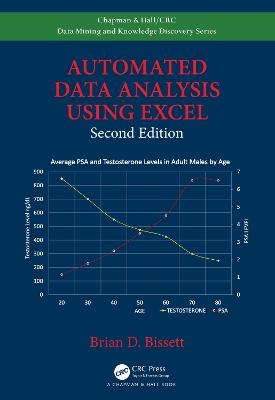
Automated Data Analysis Using Excel
Chapman & Hall/CRC (Verlag)
978-1-4822-5013-8 (ISBN)
This new edition covers some of the key topics relating to the latest version of MS Office through Excel 2019, including the creation of custom ribbons by injecting XML code into Excel Workbooks and how to link Excel VBA macros to customize ribbon objects. It now also provides examples in using ADO, DAO, and SQL queries to retrieve data from databases for analysis. Operations such as fully automated linear and non-linear curve fitting, linear and non-linear mapping, charting, plotting, sorting, and filtering of data have been updated to leverage the newest Excel VBA object models. The text provides examples on automated data analysis and the preparation of custom reports suitable for legal archiving and dissemination.
Functionality Demonstrated in This Edition Includes:
Find and extract information raw data files
Format data in color (conditional formatting)
Perform non-linear and linear regressions on data
Create custom functions for specific applications
Generate datasets for regressions and functions
Create custom reports for regulatory agencies
Leverage email to send generated reports
Return data to Excel using ADO, DAO, and SQL queries
Create database files for processed data
Create tables, records, and fields in databases
Add data to databases in fields or records
Leverage external computational engines
Call functions in MATLAB® and Origin® from Excel
Brian Bissett holds graduate degrees from Rensselaer Polytechnic Institute in Troy, NY in Electrical Engineering (MSEE) and Business Administration (MBA). He is the author of three technical books: Practical Pharmaceutical Laboratory Automation, and Automated Data Analysis with Excel, as well as numerous technical articles, and co-author of several book chapters. He began his career as a co-operative student at the Naval Undersea Warfare Center (NUWC) in New London, CT where he worked in the Experimental Test and Measurements Laboratory for Edward G. Marsh, the Hybrid Microelectronics Laboratory for Thomas A. Freehill, and the Digital Design Laboratory for Robert J. White. He worked on projects ranging from digital design of communication cards for the New Sonar Intercept System (NSIS) and analog preamplifier testing and fabrication for towed arrays. For 16 years he worked at Pfizer Global Research and Development in Groton, CT in the Physical Measurements Laboratory for Dr. Christopher Lipinski (author of the “Rule of 5”), where he designed an automated kinetic solubility assay for which Pfizer applied for a patent on. After Chris’ retirement, he reported to Dr. Franco Lombardo in the Molecular Properties Group, automating the analysis of drug discovery parameters across 5 worldwide pharmaceutical drug discovery sites. He is a frequently invited presenter at Bio-IT World in Boston, MA for the last 15 years. He returned to the federal government in 2010, at the Social Security Administration (SSA) in Woodlawn, MD. In the Office of Investment Management (OIM) in the Office of the Chief Information Officer (OCIO), he automated the data collection and analysis for SSA’s Strategic IT Asset Reviews for Associate CIO Lester Diamond. He is currently a senior advisor in the Office of Systems in the Office of Hardware Engineering.
Preface. About the Author. Acknowledgments. Introduction. Chapter 1 Customizing Excel’s Ribbon Interface. Chapter 2 Accessing Data in Excel: A VBA Macro Writer’s Perspective. Chapter 3 Methods of Loading and Saving Data in Excel. Chapter 4 Control and Manipulation of Worksheet Data. Chapter 5 Utilizing Functions in Excel. Chapter 6 Data Mining in Excel. Chapter 7 Creating Custom Report Worksheets. Chapter 8 Introduction to Microsoft Access. Chapter 9 From Excel to Access and Back Again. Chapter 10 Analyses Via External Applications. Chapter 11 An Example ADA Application. Index.
| Erscheinungsdatum | 24.05.2016 |
|---|---|
| Reihe/Serie | Chapman & Hall/CRC Data Mining and Knowledge Discovery Series |
| Zusatzinfo | 28 Tables, black and white; 50 Illustrations, black and white |
| Sprache | englisch |
| Maße | 178 x 254 mm |
| Gewicht | 980 g |
| Themenwelt | Informatik ► Datenbanken ► Data Warehouse / Data Mining |
| Informatik ► Office Programme ► Excel | |
| Mathematik / Informatik ► Mathematik | |
| ISBN-10 | 1-4822-5013-6 / 1482250136 |
| ISBN-13 | 978-1-4822-5013-8 / 9781482250138 |
| Zustand | Neuware |
| Informationen gemäß Produktsicherheitsverordnung (GPSR) | |
| Haben Sie eine Frage zum Produkt? |
aus dem Bereich


